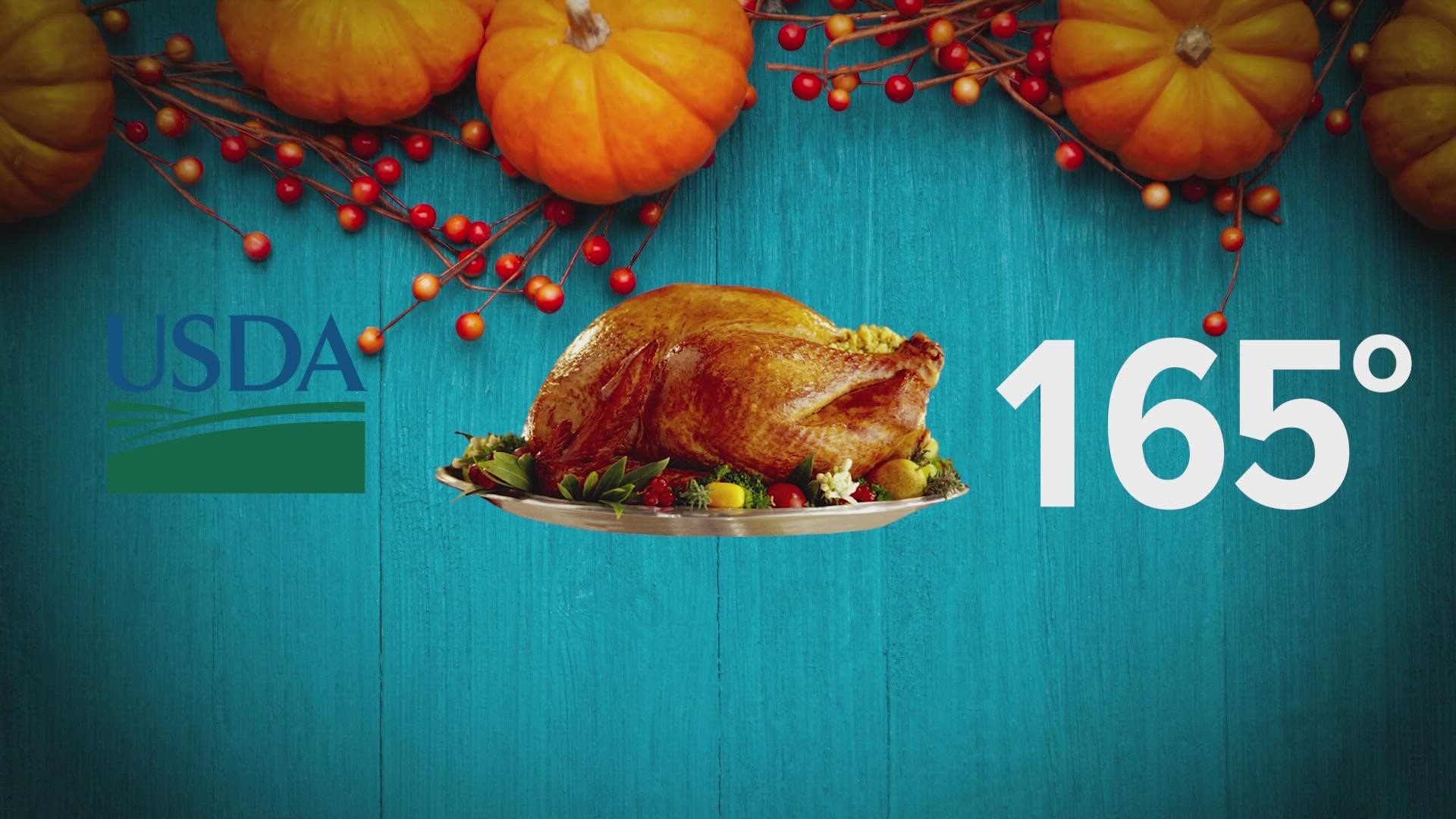TEXAS, USA — Even though it might feel like you have plenty of time before your Thanksgiving meal, don't forget that the prep work for your holiday turkey might need to start as early as this week.
According to the U.S. Department of Agriculture (USDA), you should allocate 24 hours of thaw time in the refrigerator for every 4-5 pounds of turkey.
So, depending on the size of the turkey you have, this is when you should be putting it the fridge before Thanksgiving (on Thursday):
- 4 to 12 pounds—1 to 3 days
- 12 to 16 pounds—3 to 4 days
- 16 to 20 pounds—4 to 5 days
- 20 to 24 pounds—5 to 6 days
A thawed turkey can safely remain in the fridge for one or two days before cooking. Foods that are thawed in the refrigerator can also be refrozen without cooking but there is the potential for loss of quality.
There are other methods cooks can use on short notice, such as thawing a turkey in a microwave or in cold water that's replaced every 30 minutes, but the USDA and other experts say the safest and healthiest method is waiting it out in the refrigerator.
The USDA also said to always carve your turkey after cooking. A whole cooked turkey will not cool quickly enough, thus putting it at risk for bacterial growth. Carve the turkey into smaller pieces so it cools faster in the refrigerator.
Pop-up timers are disposable thermometers used to measure a turkey’s temperature. These timers are a great tool. However, the USDA said don’t forget to check in the three recommended places as well. The turkey’s internal temperature must reach 165 F in the following locations:
- the thickest part of the breast
- the innermost part of the thigh
- the innermost part of the wing
Use a food thermometer in addition to a pop-up timer to check the turkey’s internal temperature.
According to the USDA, here are the main four steps you should take in checking for food safety:
- Clean: Wash hands before touching food.
- Separate: Keep raw meats and poultry away from fruits and vegetables.
- Cook: Turkey is safe to eat once it reaches an internal temperature of 165 F.
- Chill: Refrigerate any leftovers within two hours.
It’s important to keep your kitchen sanitized during this process to avoid food-borne illness.
Thoroughly sanitize any surfaces in your kitchen or refrigerator that come in contact with the raw turkey as it's thawing.
If you have questions about food safety, you can call the USDA Meat and Poultry Hotline at 1-888-MPHotline (1-888-674-6854) or email MPHotline@usda.gov to reach a food safety expert or chat live at ask.usda.gov from 10 a.m. to 6 p.m. Eastern Time, Monday through Friday. The Meat and Poultry Hotline is also open on Thanksgiving Day from 8 a.m. to 2 p.m. Eastern Time.
You can also use an interactive calculator from Butterball to figure out when to start defrosting.
Once your turkey is thawed, it's important to make sure you don't overcook your turkey, which can ruin the taste. Using a digital thermometer is an easy way to check on your bird.
A turkey must reach 165 degrees to be safe to eat, according to the United States Department of Agriculture.
If you want juicy meat, many experts say basting your turkey doesn't flavor the meat. The skin will be flavored but you'll be letting heat out of the oven each time your opening it to baste it, causing the turkey to be in the oven longer for cooking.
Brining or salting is a more effective way to get a moist turkey.

